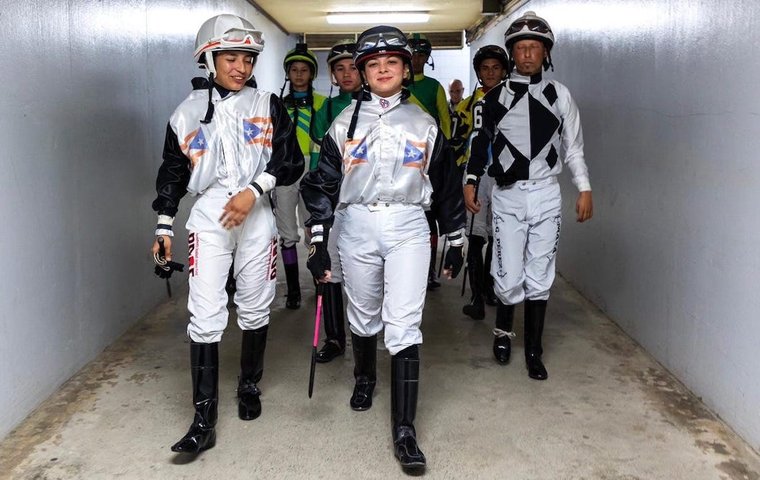
Puerto Rico’s Escuela Vocacional Hípica (EVH), located at the island’s racetrack, Hipódromo Camarero, has a proud record of producing top-flight riders – as Ken Snyder reports
There’s an adage for what is most important in real estate: location, location, location. Evidently, however, the old chestnut can also apply when it comes to becoming a jockey.
Consider this: the Escuela Vocacional Hípica (EVH) is the only jockey school on the grounds of a racetrack, Hipódromo Camarero, east of San Juan, Puerto Rico.
John Velazquez and the Ortiz brothers are among alumni who help account for nine Eclipse Awards for Outstanding Jockey and seven Eclipses for Outstanding Apprentice Jockey since the advent of the awards in 1971.
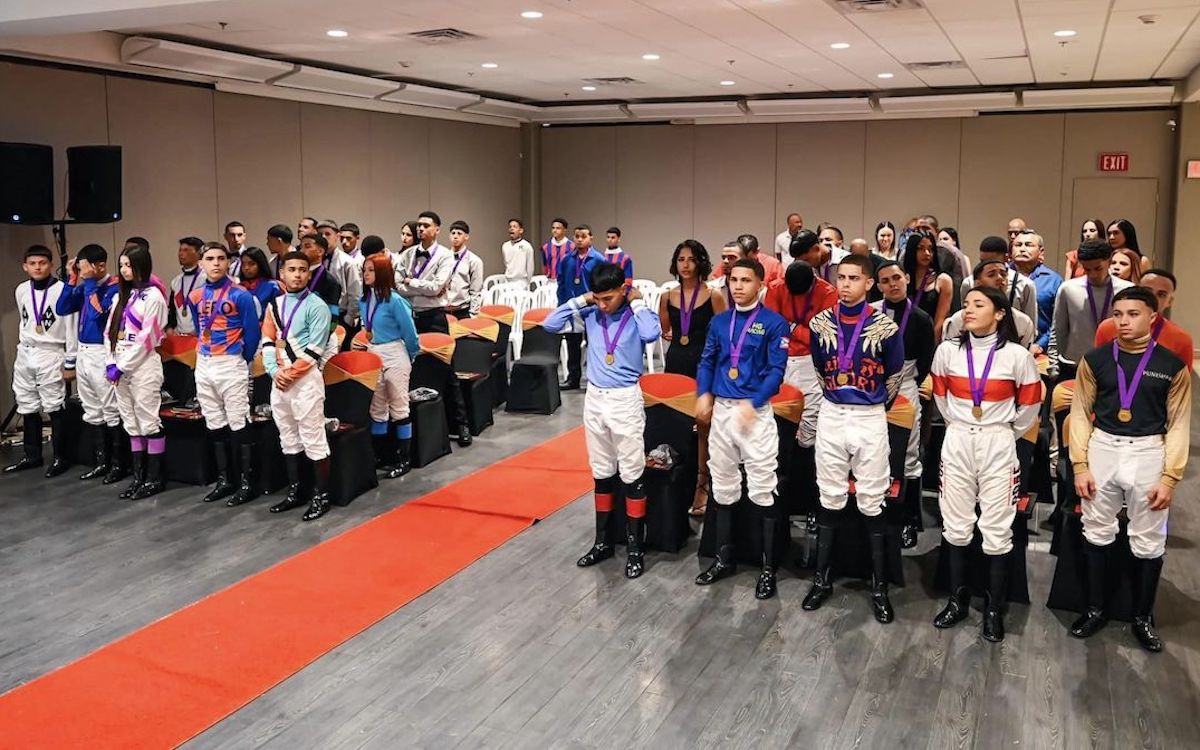 Arguably, the EVH produces the top jockeys in North America – but inarguably, the location makes possible training and real riding experience that is unrivalled.
Arguably, the EVH produces the top jockeys in North America – but inarguably, the location makes possible training and real riding experience that is unrivalled.
Velazquez is in no doubt that his garlanded career owes much to what he learned under the two-year EVH regimen. “My experience before I went to the school was just pleasure horses or ponies on the street and it was shocking to just go from horses in the streets to the racetrack,” says the ever-popular Hall of Famer known as ‘Johnny V’.
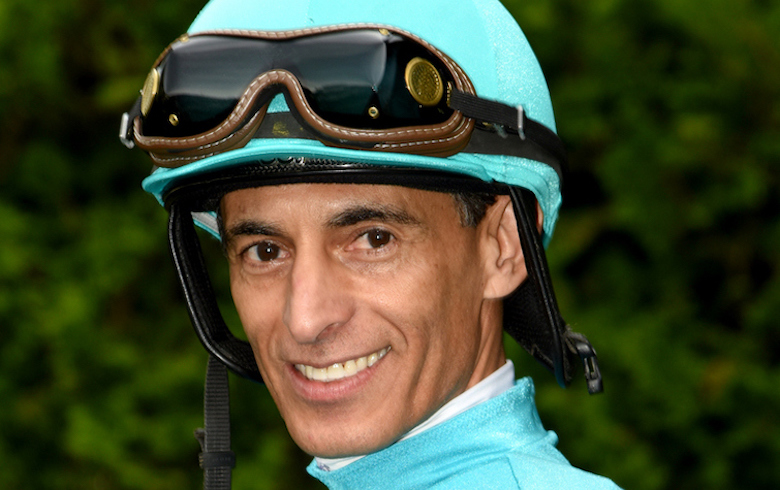 “Everything,” according to Velazquez, was difficult for him, especially learning balance. “That was very hard because I’d never rode with a saddle with stirrups,” he recalls.
“Everything,” according to Velazquez, was difficult for him, especially learning balance. “That was very hard because I’d never rode with a saddle with stirrups,” he recalls.
With more than 6,500 winners – among them three Kentucky Derbys – and nearly $470 million banked by his mounts, Velazquez is the all-time leader in prize-money among jockeys in North America.
On a barrel with saddle and stirrups
But his first experience with saddle and stirrups at the EVH was the same as it is for students today: sitting on a barrel on springs.
Velazquez entered the school in 1988 – and he says he was actually behind other students initially. “Most of the students were already galloping or knew something about the racetrack,” he says. “I had to catch up with them but thankfully I was told I had talent and I learned very quickly.”
Just as Velazquez did 25 years ago, EVH students today ride in ten full-field ‘practice races’ every two weeks against each other on Camarero’s inner sand course a year after entering the school.
In 18 months, they ride another ten practice races in the afternoon on the track’s outer dirt surface used for the regular racing card. All practice races are five furlongs except for the 20th race, which is traditionally distanced at a mile.
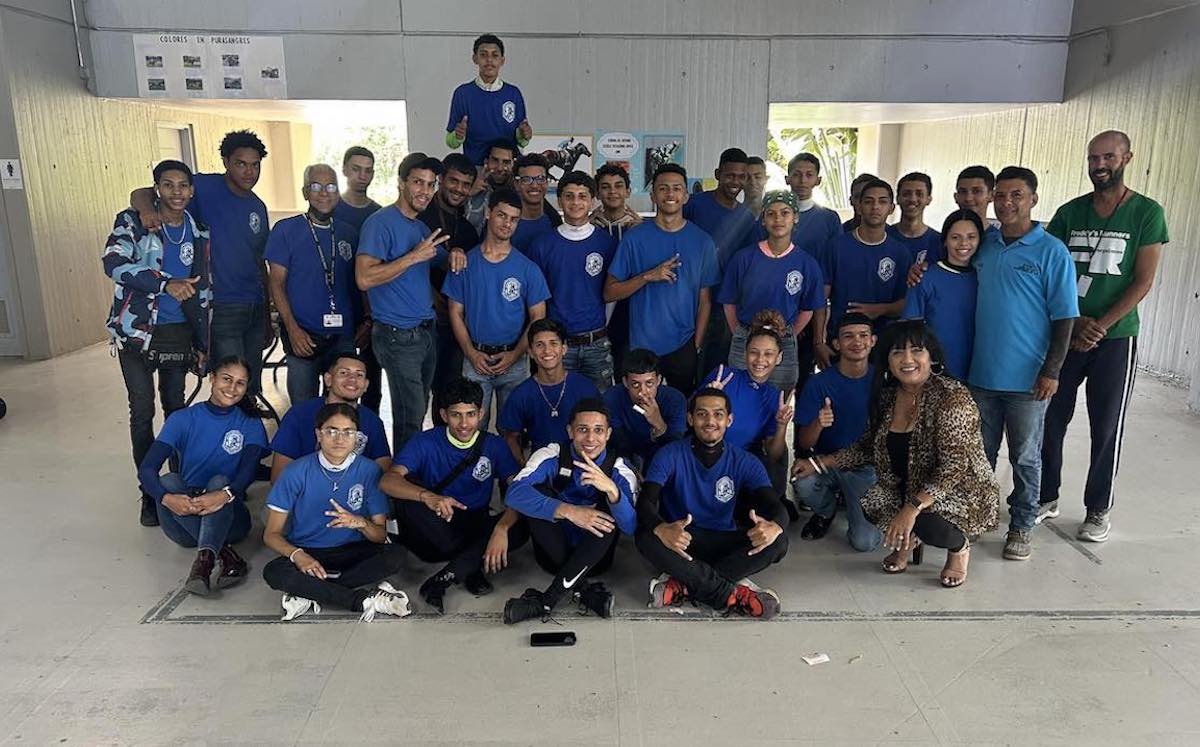 But despite their title, these afternoon races on the dirt surface, conducted every two weeks in the last six months of the curriculum, are anything but ‘practice’. They are the last race of the day before racing fans at Camarero.
But despite their title, these afternoon races on the dirt surface, conducted every two weeks in the last six months of the curriculum, are anything but ‘practice’. They are the last race of the day before racing fans at Camarero.
Students dress in silks in the jockey’s quarters, weigh before and after their race, and do everything the same as ‘proper’ jockeys. There is no betting on these races, but, attesting to the popularity of racing in Puerto Rico, most fans stay to watch the next jockey star or stars.
Directly to US racetracks
Just how skilful are graduating riders after two years at the EVH? Well, the majority of graduates leave with agents ready to book them at Camarero and US tracks. Indeed, 80% of graduates typically go directly to US racetracks.
That means for many no wandering around barns on mornings at racetracks hustling horses to work out and no requirement to break from a starting gate three times under a steward’s watch.
Also, and most importantly, it means decent mounts as trainers respect EVH grads – and they’re eager to take advantage of the apprentice weight allowance. ‘Bugboys’ don’t come much more accomplished.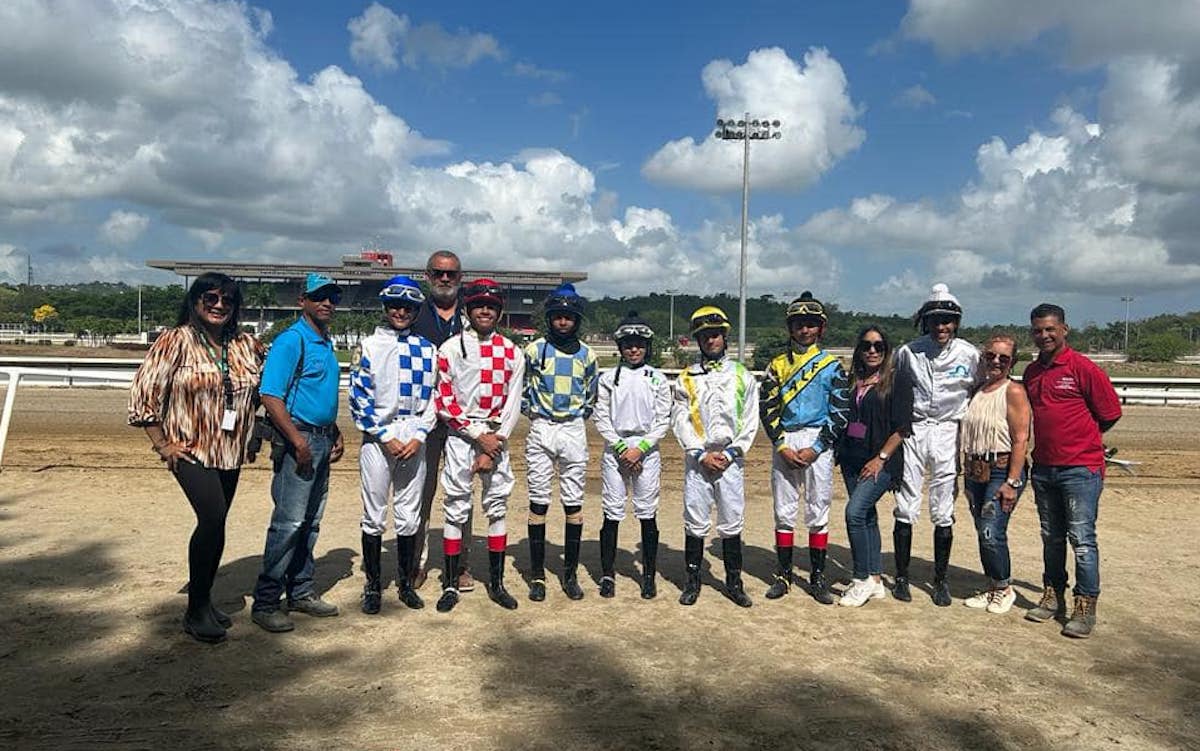
Indeed, school director Ana Velazquez recounted one particularly memorable conversation a trainer had with a recently graduated student in the US.
“Do you come from the school?” asked the trainer.
“Yes,” came the reply.
“Come on.”
“But you don’t know my name.”
“I don’t care!”
Jockey agents often call the EVH before students graduate to ask Velazquez which ones are most skilled and who she would recommend – plus who are the ones with command of English. Agents also monitor replays of afternoon practice races looking for the next Irad Ortiz or Johnny Velazquez.
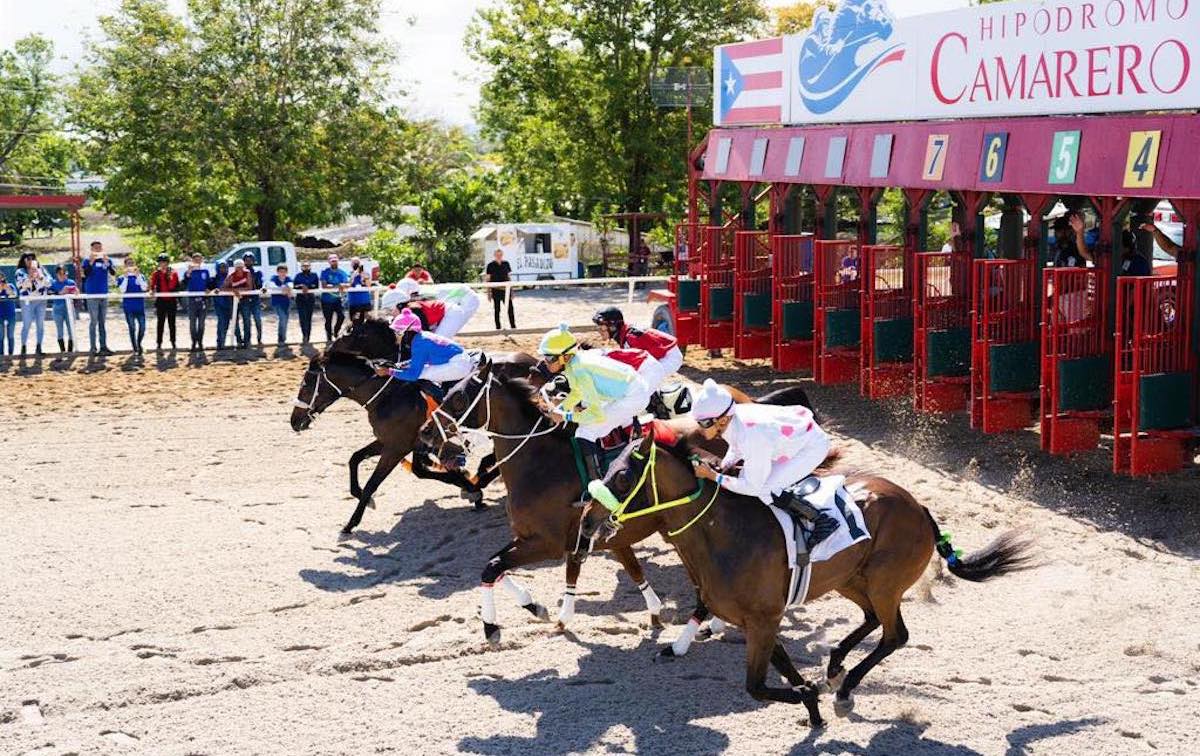
Increasingly, agents might notice the next Carol Cedeno, another alumnus of the school, as more and more female students enroll in the EVH. This year’s graduating class has two female riders in a small class of eight.
Eddie Belmonte and Angel Cordero
Two jockey legends from Puerto Rico – Eddie Belmonte and Angel Cordero – planted the seed for the school. They were the first licensed jockeys from Puerto Rico, and their success gave the Puerto Rican government the idea of formal jockey training in an academy.
A government agency launched the school in 1974. Because the EVH is government-funded, there are no tuition fees for students, and they receive a $100 stipend monthly.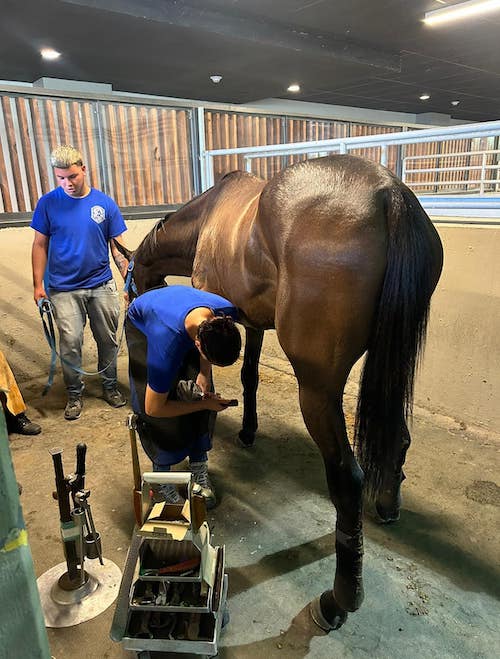
Initially, training was only for prospective jockeys but over time, the school added a one-year program in exercise riding, a program in farrier training, a curriculum to become a trainer, and even training in how to become a groom.
Academic classes in the two-year jockey and one-year exercise rider programs are also part of the curriculum. These students take courses on the history of racing, the racetrack, and the industry, professional ethics, physical education, and the English language. Trainer and farrier students take everything but physical education.
Additionally, 16-year-olds in the jockey program (the minimum age for admission) who have not completed their high-school education will take classes to earn their diploma. While 16 is the minimum age for admission to the jockey program, students as old as mid- to late-20s also enroll.
Fifty applicants every year
Surprisingly, given the success of Puerto Rican jockeys in the US, an average of only 50 applicants apply annually to the EVH jockey program.
Another 30 to 35 enter for training to be exercise riders, 20 or so enter for instruction in becoming Thoroughbred trainers, and around ten enter for farrier instruction.
Training to become a groom is the largest applicant pool with an average of 60 students admitted annually.
From that pool of 50 wannabe jockeys, the EVH admits 15 to 19. Admission, however, is not a guarantee of becoming a licensed rider; this year’s graduating class of eight students began in January 2022 with 16 students, for example, representing a 50% success rate.
A stringent weight requirement is the predominant reason for such levels of attrition. Students cannot weigh more than 102 pounds both on admission and during the first year, and no more than 106 in the second year. With tack, students cannot weigh more than 109 pounds for apprentice requirements.
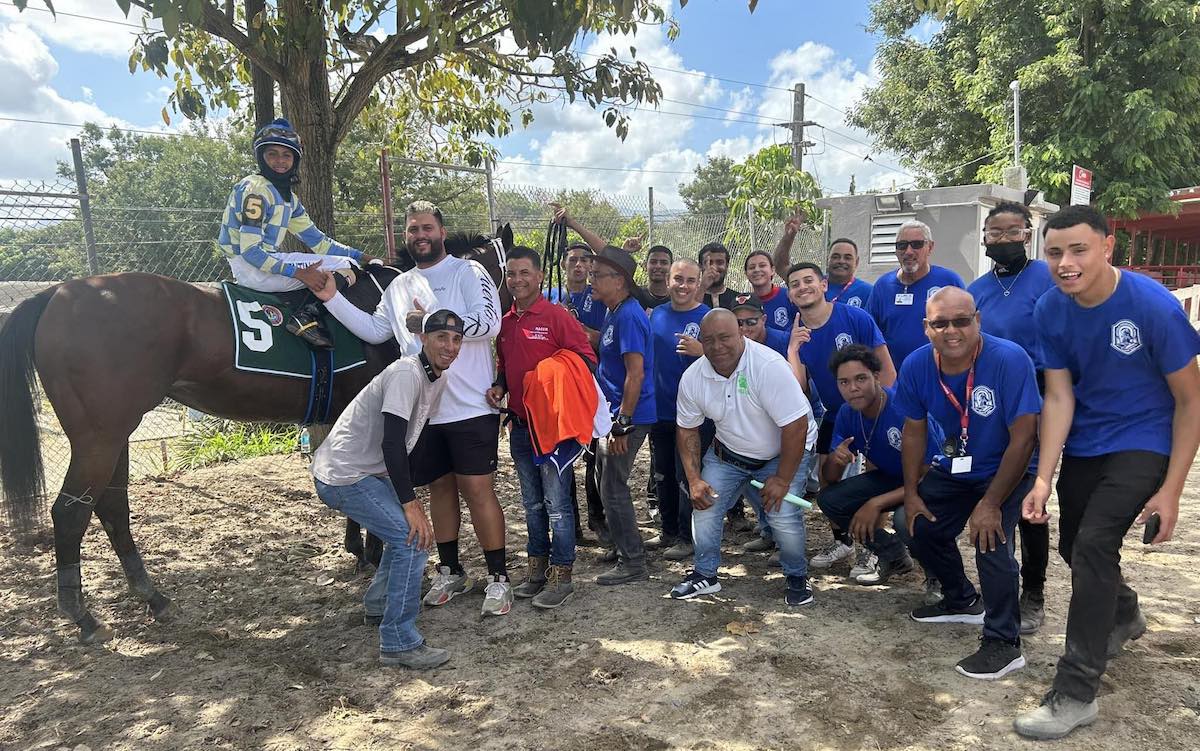 For students entering at age 16 with physical maturity still ahead of them, weight maintenance can be an unequal task and many students losing the weight battle will transfer into the one-year exercise rider program if they are 17 or older.
For students entering at age 16 with physical maturity still ahead of them, weight maintenance can be an unequal task and many students losing the weight battle will transfer into the one-year exercise rider program if they are 17 or older.
Riding experience, again, is not a prerequisite for admission. In fact, the school prefers students with no experience as they may have developed bad habits, especially in bareback races with neither bridle nor reins, common in rural areas of Puerto Rico.
Training is broken into four six-month phases beginning with horse care, riding a drum supported by springs to teach balance, and finally, in this initial half-year, riding in a round pen astride a horse.
“When that phase ends, they will go to the small sand track at Camarero with horses from the school,” said Velazquez. EVH has 11 retired Thoroughbreds experienced with carrying novice riders.
For students making it through the first year, the intensity and depth of training ramps up considerably in year two when they begin exercising school horses on the main dirt track at Camarero, and then progress to active racehorses for trainers stabled at the racetrack. They become working riders serving trainers just like the most experienced exercise riders at Camarero.
This third phase at the start of the second year is probably the most valuable in the development of young jockeys.
Getting the feel
“The hardest part has been basically just getting the feel of the horses,” said second-year student Mariangelys Almedina, the daughter of retired jockey Juan Carlos Almedina and younger sister of jockey Jean Alvelo, who rides on the mid-Atlantic circuit.
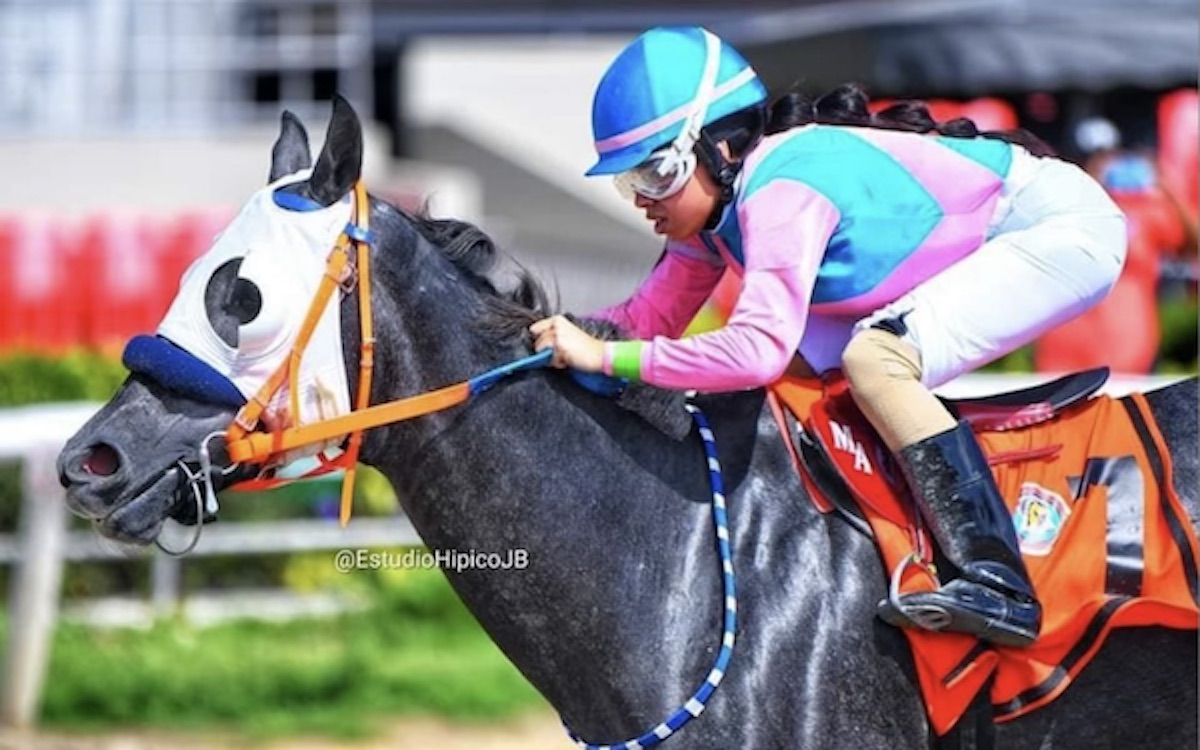 “It’s not the same watching horses train and work and actually getting on the horses and listening to the instructors and trainers giving you directions on how you’re supposed to work them.”
“It’s not the same watching horses train and work and actually getting on the horses and listening to the instructors and trainers giving you directions on how you’re supposed to work them.”
Galloping horses like any other exercise rider is an introduction to the difficulty and demands of a working role in racing. “Any work they [trainers] give you, they tell you before: ‘Try to feel his left leg and tell me when he stops running … see if he gets tired,’” explained Almedina.
“That’s where the work comes in because you’ve got to pay attention to the instructions the trainers give you,” she added. “They’ll ask, ‘How was his leg? Did anything feel weird?’ Then you give them feedback.”
The number of morning workouts for jockey and exercise rider students can exceed that of counterparts at US racetracks. “Our students can ride as many as 20 in a day,” Almedina added. “Some horses in the workouts are the ones students will ride in the practice races.”
Practice makes perfect
The 20 practice races are the cherry on the cake of the heavy morning workout load, thereby providing the not-so-secret sauce among racetrack insiders readying the students for the racetracks of America and elsewhere.
Before going into the proverbial deep end of the pool, however, gate training familiarizes students with riding in traffic. It requires a healthy dose of calmness and not a little bit of courage.
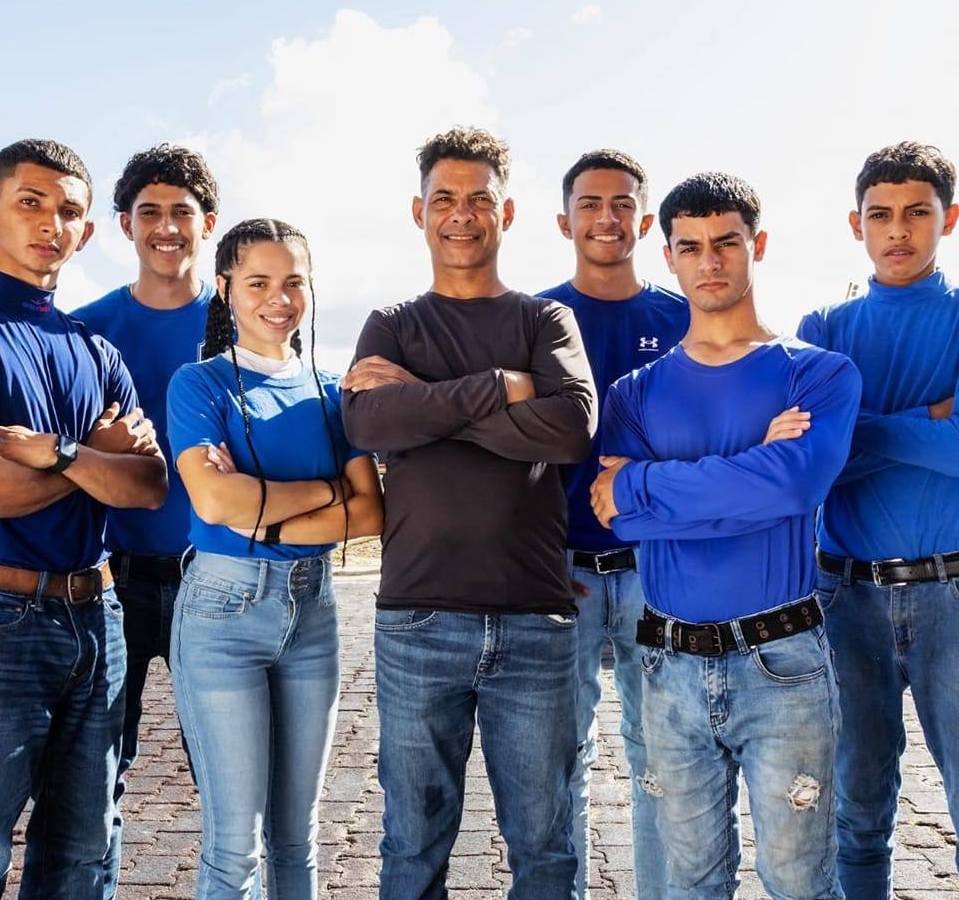 “Sometimes you went out with two other horses and riders,” Almedina said. “Somebody next to you would get close to you, and you’d be in the middle or the far right on the rail. You had to keep calm.”
“Sometimes you went out with two other horses and riders,” Almedina said. “Somebody next to you would get close to you, and you’d be in the middle or the far right on the rail. You had to keep calm.”
The practice races that followed gate training with a field of eight horses were literally a blur, according to Almedina. “You don’t know what happened until you see the replay, but when you’re racing, it’s all ‘Come on! Let’s go!’
“You didn’t know what the other horses were going to do or what your horse would do,” she added. “You had to focus on yourself and your horse, keeping him calm – just watching out for anything that he might get scared of.”
Almedina won the fourth and seventh practice races on the inner course at Camarero earlier this year, making her one of the top students in this year’s class.
She will vie for a trophy awarded to the winner of the tenth afternoon race on the dirt, before graduating at the end of this year and becoming a licensed apprentice in 2024.
There are also prizes awarded to the student winning the most practice races in the final phase of training. Exercise riding students are also awarded a prize for the most horses galloped.
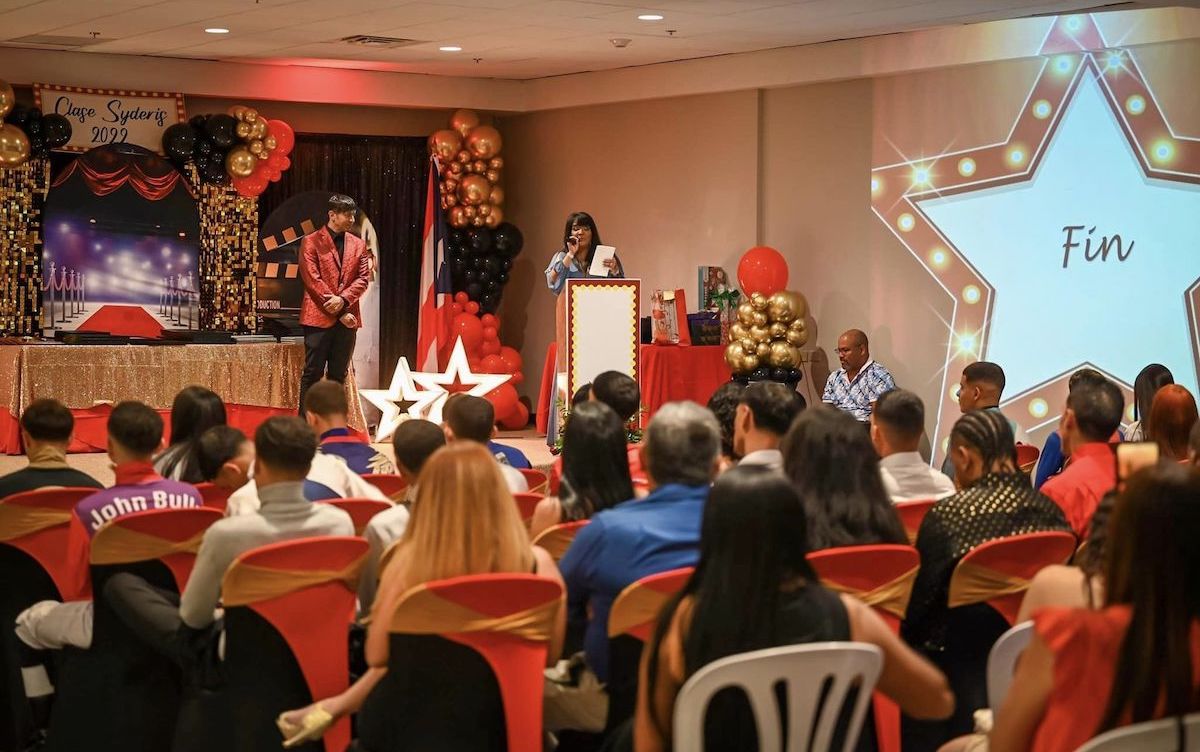 The culmination of all the hard work and experience for EVH jockey students is a race following their graduation when they are newly licensed apprentices. It is traditionally held on New Year’s Day at Camarero.
The culmination of all the hard work and experience for EVH jockey students is a race following their graduation when they are newly licensed apprentices. It is traditionally held on New Year’s Day at Camarero.
Almedina demonstrated readiness for the apprentice race along with precociousness and self-assurance beyond her 21 years with one of the practice-race horses on which she won.
“The first time he raced with me, it was more like a work,” she recalled. “He didn’t really show a lot. The trainer, we talked about it and I told him, ‘Maybe if we put in some work for the next race, he might do better.’
“He gave me the opportunity and trusted me and said, ‘All right, let’s work him out this week and next week, we’ll put him in the race.’” That sort of feedback might be expected from a veteran journeyman jockey, not necessarily from a 21-year-old student.
It also resulted in her first practice race win. Her reaction was priceless: “Did I win? What happened?”
If the subsequent experience of her predecessors as the world’s most successful jockey school is anything to go by, perhaps she had better get used to the winning feeling.
• Visit the Hipodromo Camarero website
What’s been happening: Sodashi’s retirement, a slew of Breeders’ Cup preps, Steve Cauthen and more …
A life after racing: meet York’s gentle equine ambassador, the former G1 sprint star Goldream
Up close and personal at the court of king Secretariat – a personal pilgrimage
View the latest TRC Global Rankings for horses / jockeys / trainers / sires


